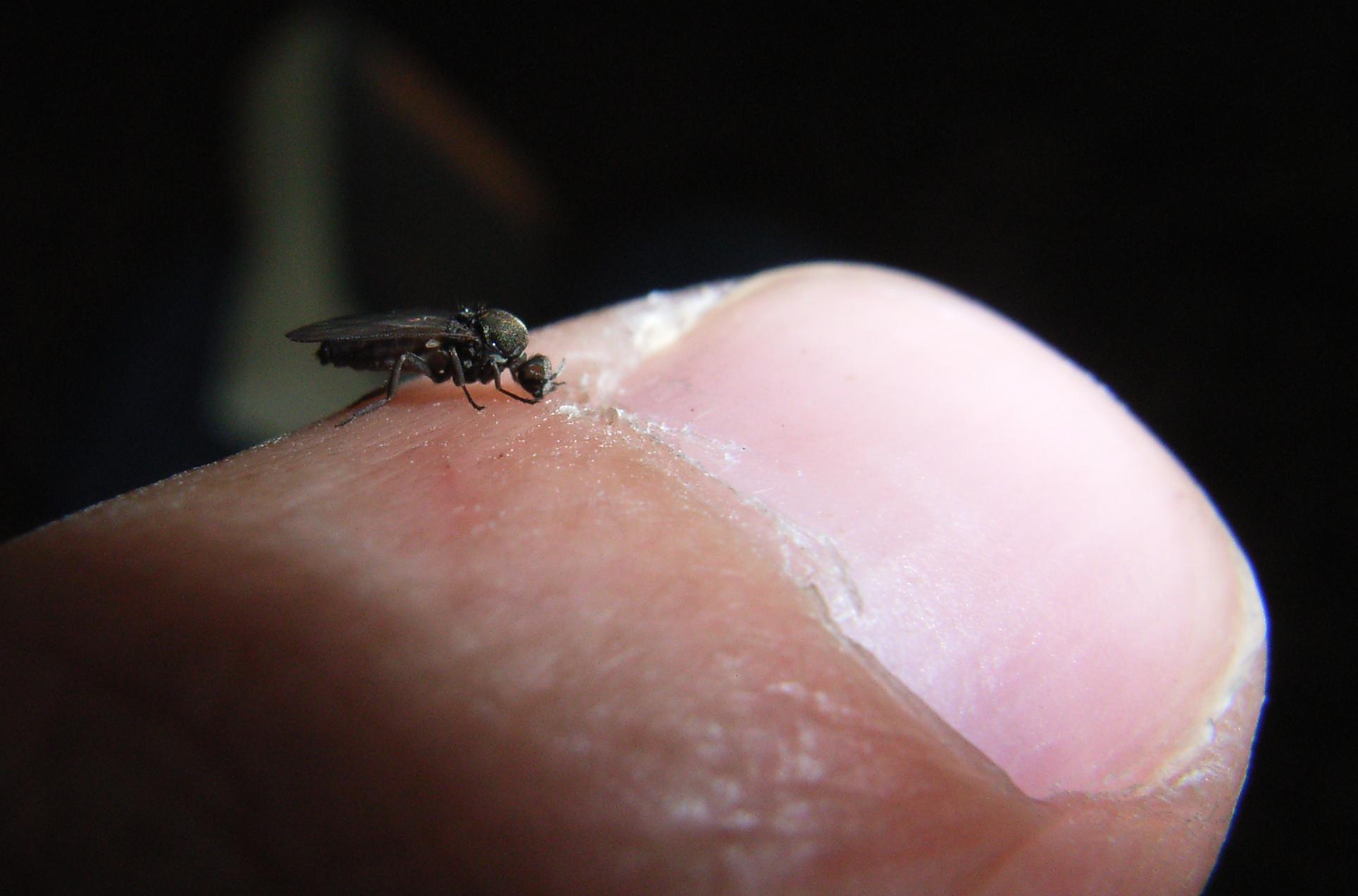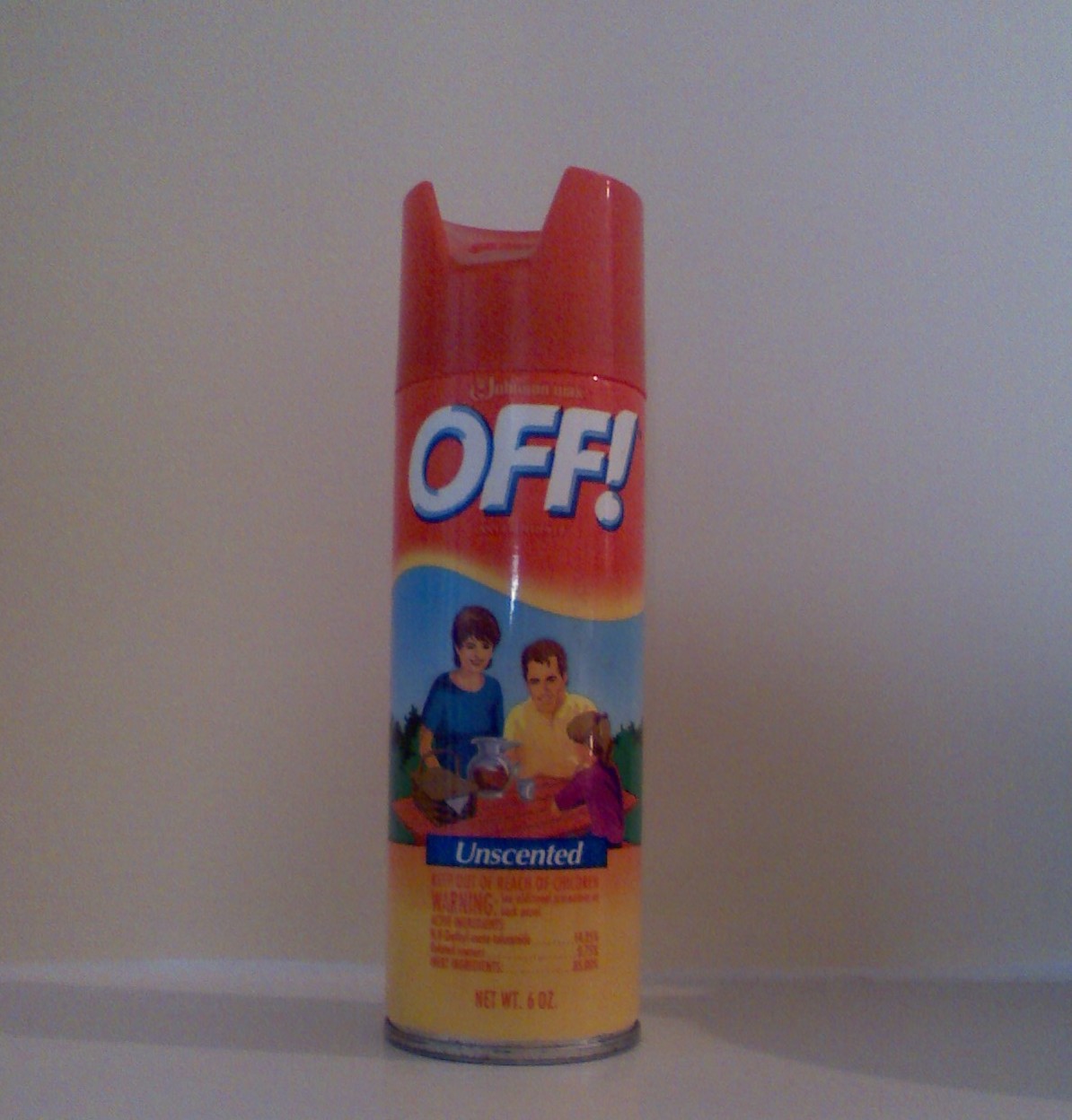|
Metofluthrin
Metofluthrin is a pyrethroid used as an insect repellent. The vapors of metofluthrin are highly effective and capable of repelling up to 97% of mosquitoes in field tests. Metofluthrin is used in a variety of consumer products, called emanators, for indoor and outdoor use. These products produce a vapor that protects an individual or area. Effectiveness is reduced by air movement. Metofluthrin is neurotoxic, and is not meant to be applied directly to human skin. Although metofluthrin has insecticidal properties against the sand fly, ''Phlebotomus sergenti'', it is not an effective repellent of this insect. See also * ''Phlebotomus'', a genus of sand flies * Mosquito coil, may contain metofluthrin * Off! (brand) Off! (stylized as OFF!) is an insect repellent brand from S. C. Johnson & Son, produced in Finland Finland ( fi, Suomi ; sv, Finland ), officially the Republic of Finland (; ), is a Nordic country in Northern Europe. It shares land ..., some products ... [...More Info...] [...Related Items...] OR: [Wikipedia] [Google] [Baidu] |
Pyrethroid
A pyrethroid is an organic compound similar to the natural pyrethrins, which are produced by the flowers of pyrethrums (''Chrysanthemum cinerariaefolium'' and ''Chrysanthemum coccineum, C. coccineum''). Pyrethroids are used as commercial and household insecticides. In household concentrations pyrethroids are generally harmless to humans. However, pyrethroids are toxic to insects such as bees, dragonflies, mayflies, Horse-fly, gadflies, and some other invertebrates, including those that constitute the base of aquatic and terrestrial food webs. Pyrethroids are toxic to aquatic organisms, especially fish.Pyrethroids fact sheet from the Illinois Department of Public Health. They have been shown to be an effective control measure for malaria outbreaks, through indoor applications. ...
|
Insect Repellent
An insect repellent (also commonly called "bug spray") is a substance applied to skin, clothing, or other surfaces to discourage insects (and arthropods in general) from landing or climbing on that surface. Insect repellents help prevent and control the outbreak of insect-borne (and other arthropod-bourne) diseases such as malaria, Lyme disease, dengue fever, bubonic plague, river blindness, and West Nile fever. Pest animals commonly serving as vectors for disease include insects such as flea, fly, and mosquito; and ticks (arachnids). Some insect repellents are insecticides (bug killers), but most simply discourage insects and send them flying or crawling away. Nearly any would be fatal upon reaching the median lethal dose, but classification as an insecticide implies death even at lower doses. Effectiveness Synthetic repellents tend to be more effective and/or longer lasting than "natural" repellents. For protection against mosquito bites, the U.S. Centers for Diseas ... [...More Info...] [...Related Items...] OR: [Wikipedia] [Google] [Baidu] |
Mosquito Coil
A mosquito coil is a mosquito-repelling incense, usually made into a spiral, and typically made using dried paste of pyrethrum powder. The coil is usually held at the center of the spiral, suspending it in the air, or wedged by two pieces of fireproof netting to allow continuous smoldering. Burning usually begins at the outer end of the spiral and progresses slowly toward the center of the spiral, producing a mosquito-repellent smoke. A typical mosquito coil measures around in diameter and lasts around seven to twelve hours. Mosquito coils are widely used in Asia, Africa, South America, Canada, Mexico and Australia. Invention Pyrethrum was used for centuries as an insecticide in Persia and Europe, being developed into a mosquito coil in the late 1800s by a Japanese couple: Yuki and Eiichiro Ueyama ( 上山英一郎). At that time in Japan, pyrethrum powder was mixed with sawdust and burned to repel mosquitoes. Ueyama initially created incense sticks mixed from starch powder, dr ... [...More Info...] [...Related Items...] OR: [Wikipedia] [Google] [Baidu] |
Insecticide
Insecticides are substances used to kill insects. They include ovicides and larvicides used against insect eggs and larvae, respectively. Insecticides are used in agriculture, medicine, industry and by consumers. Insecticides are claimed to be a major factor behind the increase in the 20th-century's agricultural productivity. Nearly all insecticides have the potential to significantly alter ecosystems; many are toxic to humans and/or animals; some become concentrated as they spread along the food chain. Insecticides can be classified into two major groups: systemic insecticides, which have residual or long term activity; and contact insecticides, which have no residual activity. The mode of action describes how the pesticide kills or inactivates a pest. It provides another way of classifying insecticides. Mode of action can be important in understanding whether an insecticide will be toxic to unrelated species, such as fish, birds and mammals. Insecticides may be repellent ... [...More Info...] [...Related Items...] OR: [Wikipedia] [Google] [Baidu] |
Sand Fly
Sandfly (or sand fly) is a colloquial name for any species or genus of flying, biting, blood-sucking dipteran (fly) encountered in sandy areas. In the United States, ''sandfly'' may refer to certain horse flies that are also known as "greenheads" (family Tabanidae), or to members of the family Ceratopogonidae. The bites usually result in a small, intensely itchy bump or welt, the strength of which intensifies over a period of 5-7 days before dissipating. Moderate relief is achieved with varying success through the application of over the counter products such as Benadryl (ingested) or an analgesic cream such as After Bite (applied topically). Outside the United States, ''sandfly'' may refer to members of the subfamily Phlebotominae within the Psychodidae. Biting midges (Ceratopogonidae) are sometimes called sandflies or no-see-ums (no-see-em, noseeum). New Zealand sandflies are in the genus ''Austrosimulium'', a type of black fly. In the various sorts of sandfly only the fema ... [...More Info...] [...Related Items...] OR: [Wikipedia] [Google] [Baidu] |
Phlebotomus
''Phlebotomus'' is a genus of " sand flies" in the Diptera family Psychodidae. In the past, they have sometimes been considered to belong in a separate family, Phlebotomidae, but this alternative classification has not gained wide acceptance. Epidemiology In the Old World, ''Phlebotomus'' sand flies are primarily responsible for the transmission of leishmaniasis, an important parasitic disease, while transmission in the New World, is generally via sand flies of the genus ''Lutzomyia''. The protozoan parasite itself is a species of the genus ''Leishmania''. Leishmaniasis normally finds a mammalian reservoir in rodents and other small animals such as canids ( canine leishmaniasis) and hyraxes. The female sand fly carries the ''Leishmania'' protozoa from infected animals after feeding, thus transmitting the disease, while the male feeds on plant nectar. The parasite ''Leishmania donovani'' is the main causative agent of visceral leishmaniasis (VL) in India, Nepal, and Bangladesh ... [...More Info...] [...Related Items...] OR: [Wikipedia] [Google] [Baidu] |
Off! (brand)
Off! (stylized as OFF!) is an insect repellent brand from S. C. Johnson & Son, produced in Finland. Its active ingredient is DEET (''N'',''N''-diethyl-''m''-toluamide) or metofluthrin Metofluthrin is a pyrethroid used as an insect repellent. The vapors of metofluthrin are highly effective and capable of repelling up to 97% of mosquitoes in field tests. Metofluthrin is used in a variety of consumer products, called emanators ... which is the most common ingredient in insect repellants. It was first sold in 1957. It is used to avoid mosquito bites by applying the product to the skin or clothing. In Japan and North Korean markets, the product was sold as Skinguard. The company has since sold its product on the North Korean market for the first time since 1999. References External links * S. C. Johnson & Son brands Insect repellents Products introduced in 1957 {{Product-stub ... [...More Info...] [...Related Items...] OR: [Wikipedia] [Google] [Baidu] |


